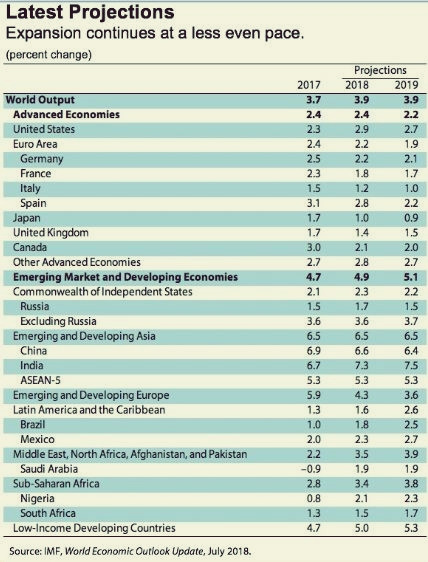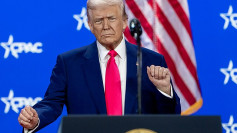Trump's trade war against the rest of the world will curb global growth over the next few years and its more prominent victims will include the United States, concludes the International Monetary Fund (IMF) in its updated World Economic Outlook forecast.
In this report, the IMF said that "Amid rising tensions over international trade, the broad global expansion that began roughly two years ago has plateaued and become less balanced. In our latest World Economic Outlook Update, we continue to project global growth rates of just about 3.9 percent for both this year and next, but judge that the risk of worse outcomes has increased, even for the near term."
Because of U.S. tariffs, the IMF points out the risks to global growth are rising, and the outlook for the global economy has darkened due to worsening trade tensions exacerbated by the uneven economic growth in many parts of the world. The IMF expects trade volumes to improve by less than expected in 2018, rising 4.5 percent against its forecast of 4.8 percent.
The IMF warned the U.S. is particularly vulnerable to this trade war due to retaliation, and because its economic prosperity depends on the free trade being curtailed by Trump's trade war. It labeled Trump's trade war as the greatest near-term threat to the world economy.
"As the focus of global retaliation, the United States finds a relatively high share of its exports taxed in global markets in such a broader trade conflict, and it is therefore especially vulnerable," said the IMF.
This year, however, will still witness global economic growth but on a more muted scale. The IMF maintained its global growth forecast of 3.9 percent for 2018 and 2019 but has lowered the outlook for the UK and the Eurozone, among others.
Trump's tariffs represent just a small share of global trade -- for now -- but the IMF warned that if tariffs and counter-tariffs escalate, they might slice 0.5% off global growth by 2020.
"The risk that current trade tensions escalate further -- with adverse effects on confidence, asset prices, and investment -- is the greatest near-term threat to global growth," said Maury Obstfeld, the IMF's economic counselor.
The IMF maintained its growth forecasts for the U.S. and China for 2018. It projects a temporary economic expansion of 2.9 percent in the U.S. this year due to tax cuts and increased government spending. China's GDP growth is forecast at 6.6 percent, lower than Beijing's official target, because of measures being taken to limit debt.
On the other hand, the IMF cut its 2018 growth forecast for the UK to 1.4% for this year, down 0.2 percent from its April projection. It expects the euro area economy to slow to 2.2 percent in 2018, also 0.2 percent lower than predicted.
Overall, advanced economies are expected to grow by 2.4 percent this year, down 0.1% from the April estimates. Emerging markets and developing economies should grow by 4.9 percent this year, however.
"The possibility for more buoyant growth than forecast has faded somewhat," noted the IMF in its report. "Downside risks, on the other hand, have become more salient."






